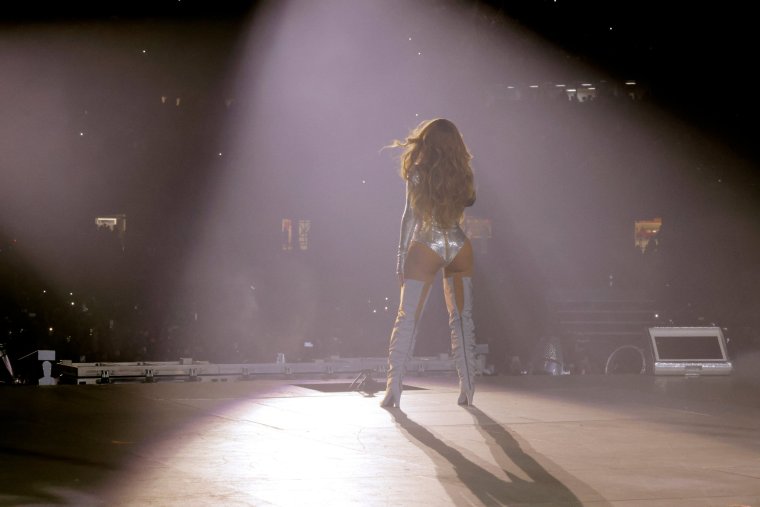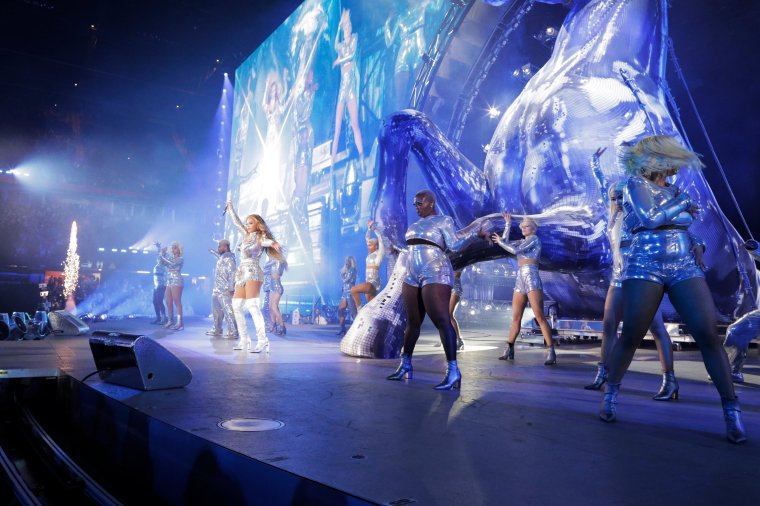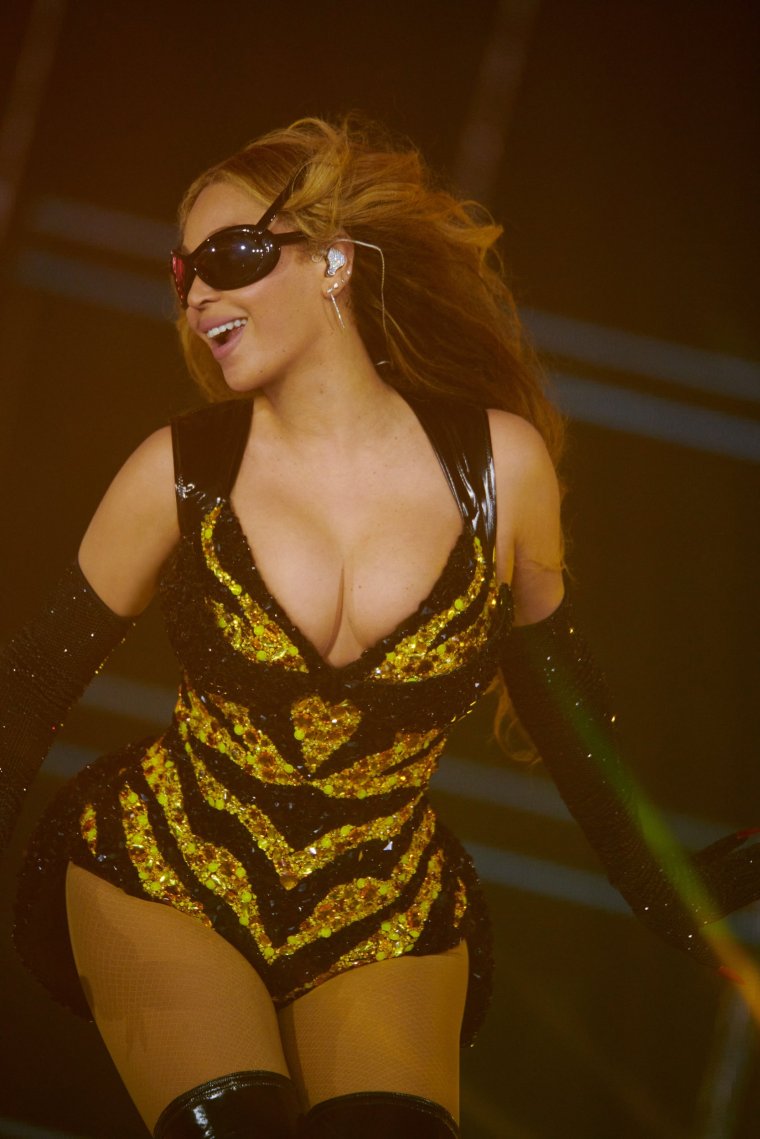It is a known fact that Beyoncé is, in the cultural imagination, less a pop star than a god. She bestows; sparkles; moves in mysterious ways. In stark contrast to many of her contemporaries, she never gives interviews and posts on social media very rarely, always via her team. Her live shows, too, are often akin to a religious experience. Her very presence in the room leaves thousands of people hysterical, reaching for the smelling salts, unable to cope with the energy radiating off her. The word “icon” is thrown around a lot these days, but for Beyoncé, it still means something.
In Cardiff on 17 May, too – Beyoncé’s third show of her Renaissance tour and first in the UK – there was a feeling of pilgrimage. The roads in the city centre were closed to allow the 60,000-odd fans to descend (many of whom were clad in some combination of silver, mesh and cowboy hats, which comprises the Renaissance aesthetic). Beyoncé opened the show against a screen of blue sky, dotted with clouds, in head-to-toe iridescent silver. As she rose through the stage to screams of joy and awe, it seemed we were about to see the light.

Yet somehow she wasn’t quite at the top of her game. Since her show in Dubai in January, rumours have circulated online that she is recovering from surgery on her foot – a problematic prospect for such an intensely physical performer. There has been no official confirmation that that’s true, but she did seem relatively static during the show, often still as her dancers moved round her, and keeping close to the ground when she joined in with the choreo. While her shows have long involved monumental spectacle, the fundamental thrill of Beyoncé is that she is, on an individual level, our greatest living performer, and one of the greatest ever to have lived. She may be a creative genius, too – but mainly she is the best, really just the best, at singing and dancing.
Fortunately, despite something about the performance feeling ever-so-slightly off, even the fair-to-middling of Beyoncé’s game is still leagues above the top of everyone else’s. The advantage of her comparatively restrained dancing meant she could show off her ludicrously good vocal, which is still as honeyed and controlled as it was in the Destiny’s Child days. She switched easily between brassy riffs of 2011’s “Love on Top” to the house refrains of Renaissance – though this itself is a vocally diverse album, with falsetto runs, husky raps and disco choruses, and she hit every note with sickening ease.
The show, too, was phenomenal as a spectacle and musical event, a three-hour marathon that included Renaissance in full, plus past highlights, including hits like “Partition”, “Crazy in Love”, “Run the World (Girls)” and “Formation” (the famous choreography Renaissance-d up with chrome hats). There were frequent interludes for costume changes filled with impressive displays from her dancers, along with huge-scale graphics and video footage, often involving Beyoncé’s face or body displayed fifty feet tall on the screen.

Yet for all this iconography, it’s when she moves in real life that she’s electrifying. She opened with the ballad “Dangerously in Love” and followed with a few more downtempo songs that she sang standing, or sitting, still, creating a slightly strange atmosphere – but the moment that she simply walked across the stage in “I Care”, the whole thing came alive. She flicked her hips in “Break My Soul” and the crowd melted in her hand. In “Cuff It”, the Les Twins – a pair of dancers who tour with her frequently – formed a kind of human seat at the line “can I sit on top of you”, and she shared a genuine moment of laughter with them as she took a perch, arching an eyebrow. Her physicality, her presence, her flesh and blood, is what is truly special.
Of course, physicality is what Renaissance is all about. A continuous mix of disco and house using ’90s samples, the album celebrates hedonism, the intimacy of the dancefloor and the communal closeness of queer culture. Its image is the glitter ball, but it’s about the sex, sweat and dancing that happen underneath it – all evocations that have made Beyoncé’s past shows some of the greatest ever. Here, there is footage of the club and of Black communities inhabiting their spaces, and high-camp staging – such as the two songs she sings from within a giant, iridescent clam shell, and the disco-ball horse from the album cover. But again, as much as this imagery was powerful and impressive, it was moments such as the penultimate sequence – in which she emerged in a bee costume replete with bug-eye glasses, and fooled around with “Heated”, her “favourite song to sing”, and “Pure/Honey” – when you got a glimmer of the divine. We just wanted more of them.

As the show closed with “Summer Renaissance”, which samples heavily from Donna Summer’s “I Feel Love”, she was, once again, clad in silver – ultimately flown over the crowd and carried into the heavens. Perhaps that’s where she belongs – or perhaps she’s at her best when she’s human.

